
By Natan Reddy, Principal
New York City has long been an industrial powerhouse, and today, its talent, technology, infrastructure, and entrepreneurial community make it one of our nation’s premier hubs for digital industrial innovation
In late 2016, I moved to New York City. I grew up in Silicon Valley and spent most of my life in the San Francisco Bay Area. I found it ironic at that time, that I was moving all the way to NYC to research emerging startup and tech trends at a company called CB Insights – I thought to myself, wouldn’t this be better suited to the Bay Area? I knew nothing about NYC’s tech scene.
Little did I know, not only was NYC about to introduce me to its vast tech landscape, but it was also about to unlock an entire community of brilliant people specifically working at the intersection of tech and industrials. After joining The New York Supply Chain Meetup in its early days, I had a chance to meet founders, operators, and investors from across the industrial spectrum (logistics, manufacturing, construction, etc.). This informed my research at CB Insights and ultimately led to my role at Ironspring Ventures.
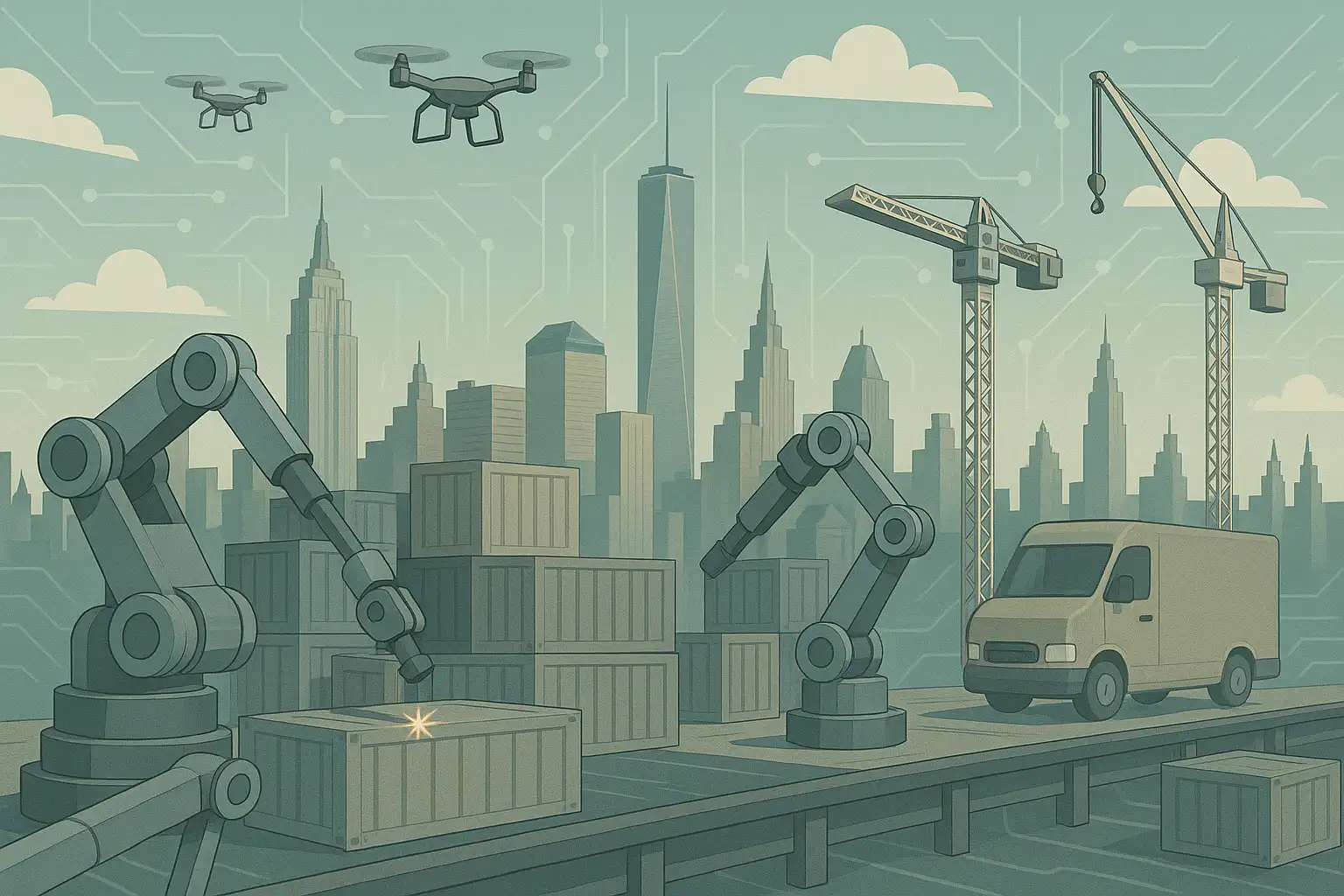
In the years since, it’s been exciting to witness the growth of NYC’s industrial tech ecosystem. In parallel, the Ironspring Ventures team has grown in New York – and we are thrilled to be a small part of that journey.
In this piece, we will showcase NYC’s industrial past and why it lends the perfect backdrop to the city’s digital industrial present.
As the industrial revolution progressed through the late 19th and early 20th centuries, NYC solidified its status as a major manufacturing hub. In 1919, NYC was responsible for more than 50% of total national output for manufactured goods across paper, clothing, millinery goods, pens, leather goods, and other products. In 1900, NYC housed more than half a million manufacturing laborers, many of whom were recent immigrants to America. NYC’s manufacturing sector is vibrant today, accounting for 15% of the city’s workforce, with a focus on metals, processed foods, and more.
Immediately noticeable to any visitor or resident, there is A LOT of construction activity in New York and it never ceases. As NYC has grown to become America’s largest metropolitan area, the city has emerged as one of the largest construction markets in the world, estimated at $83B annually in 2023. As the city expands ever more vertical, there will be continued demand for major commercial and residential developments. In addition, as the city continues to support 8 million+ inhabitants, it has identified more than $14B in needed infrastructure repair spending between 2024 and 2027.
Long before becoming one of the world’s leading financial epicenters, NYC started as New Amsterdam, a small colonial Dutch port city with seafaring at its core. By the early 19th century, the city (now renamed New York) and its South Street Seaport had surpassed Boston and Philadelphia as America’s most prominent port. Between 1801 and 1961, the Brooklyn Navy Yard built more than 160 ships, including the ironclad USS Monitor (used in the Civil War) and the USS Arizona battleship (used in World War II). At its height during WWII, the Brooklyn Navy Yard employed more than 70,000 New Yorkers. And New York’s maritime presence remains alive and well today, with the Port of New York and New Jersey ranked as North America’s third-largest port by container volume (processing 8.7 million TEUs in 2024).
In 1882, Thomas Edison’s Edison Illuminating Company opened an electric power grid in lower Manhattan powered by Pearl Street Station. It was the first such grid in the US and a model for the rest of the city as it continued to electrify. While Pearl Street Station was historically used for coal to produce fuel, it is still true today that NYC has one of the “dirtiest” grids in the state with a large reliance on burning fossil fuels. Nevertheless, the city has set ambitious goals to transform the electricity grid to one powered by 100% renewable resources by 2040.
The above represents just a small fraction of NYC’s industrial past and present but provides helpful context behind the city’s setting as a natural hub for digital industrial innovation.

“When we started Copia in New York in 2020, people asked ‘why are you starting a company in New York?” Now that has completely shifted … I’ve heard people describe New York founders and the New York tech scene more broadly as ‘brass tacks.’ I think there is some truth to this, and I find when we are hiring, engineers gravitate towards stickier problems in ‘not sexy’ industries, which makes it great for industrial founders. In my opinion, New York has truly become a great city to build, and we are going to keep growing here.” – Adam Gluck, Founder & CEO, Copia Automation
NYC’s larger tech boom has been written about many times over. But what hasn’t been discussed often? The burgeoning rise of its digital industrial ecosystem, with an influx of founders, investors, and ecosystem players moving to the city over the past 10+ years.
While it may be hard to pinpoint the very “first” supply chain or industrial startup to set up shop in NYC, some entrants from the early 2010s include supply chain regulatory software Sourcemap (2011), freight marketplace Transfix (2013), delivery optimization platform Loginext (founded in 2014, Jersey City), and manufacturing industrial IoT platform Augury (2015). As the decade progressed, other companies began to establish themselves here, including digital freight forwarder Flexport (which expanded to NYC in 2016) and AI supply chain mapping unicorn Altana (founded in 2017).
“New York City has rapidly evolved from a finance and media hub into a thriving center for industrial innovation. We’re seeing a new generation of founders tackle complex problems in manufacturing, supply chain, and climate infrastructure — sectors that are critical to building the new economy. The density of talent, research institutions, and capital in the New York Metropolitan Area is making it possible to build serious, world-changing companies. Opening the Eclipse East Coast office in New York was a natural step for our team as we deepen our commitment to backing industrial technology at its inflection point.” – Kaitlyn Glancy, Partner, Eclipse

Alongside these companies, a growing ecosystem of industrial focused investors, accelerators, and ecosystem partners began to take shape in the late 2010s. I was fortunate to meet Brian Aoaeh and Lisa Morales-Hellebo, who started The New York Supply Chain Meetup (TNYSCM), in early 2017. As a part of TNYSCM, we brought together hundreds of industrial focused founders, operators, and investors monthly to discuss trends at the intersection of supply chain innovation and warehousing, AI, fashion, food, blockchain, freight, and beyond. In tandem, accelerators and funds with strong industrial focuses began to gain critical mass across the NY ecosystem (Techstars Industrial IoT program led by Jenny Fielding, Metaprop, Bolt, Fifth Wall, and Equal Ventures are a few examples).
Today, the NYC digital industrial community has grown far more than I could have imagined with dozens of startups and VC funds with a boots-on-the-ground presence. Three Ironspring Ventures portfolio companies reside in the city (Copia, Stable, and Stealth), and there has been an incredible activation of investors (sector focused and generalist, early and growth) engaged in logistics, manufacturing, construction, and alternative energy. Those firms with robust digital industrial portfolios include 25madison, Dynamo Ventures, Eclipse, Goldman Sachs Growth Equity, Maniv Mobility, Never Lift VC, PCV, Primary Venture Partners, Prologis Ventures, TMV, Zenda Capital, and others, many of whom have established NY-based teams in recent years.
Other ecosystem partners, including deep tech innovation center and network platform Newlab (founded 2016), have supercharged NYC’s entrepreneurial core, transforming part of the Brooklyn Navy Yard into an industrial innovation hub for more than 250 startups. Spaces like these continue to provide the critical infrastructure and support for NYC’s digital industrial community to thrive.

“Startups working on critical technology in New York City have gone from a handful of pioneers to a thriving, world-class ecosystem. They’re raising more capital and raising it faster than ever before. With venture platform partners like Newlab, founders no longer need to dedicate time and money towards building their own lab space or machine shop outside of the city. Instead, they can establish their headquarters right here in NYC, attracting top talent and investment while piloting, commercializing, and scaling their technologies globally through our network of partners and infrastructure.” – Brandon Corts, Senior Director of Ventures, Newlab
In light of this growth, the Ironspring Ventures team has curated and published market maps of digital industrial startups and investors across the NYC ecosystem that we are thrilled to share with you.
Please note that these maps are not meant to be exhaustive. Did we miss anyone? Let us know here (if a startup) or here (if a VC).
Click through to see both maps.
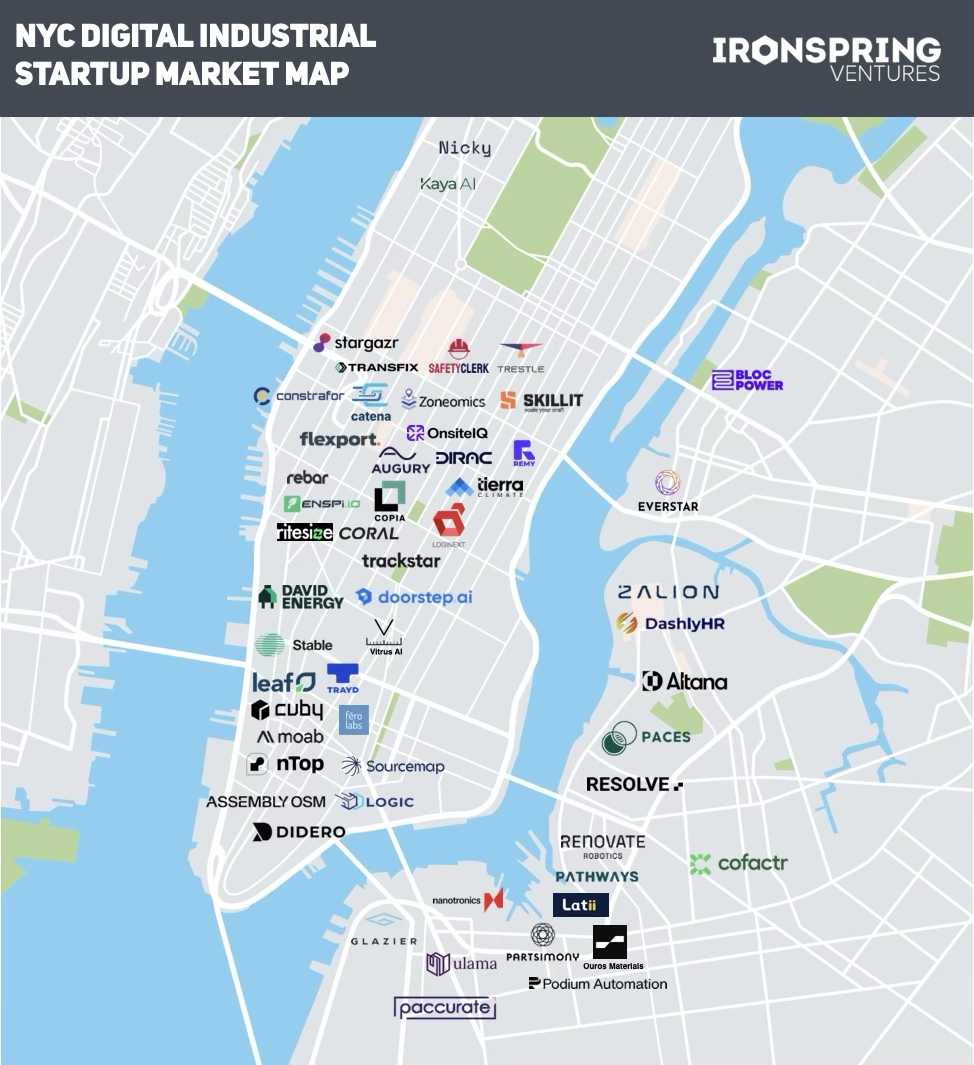
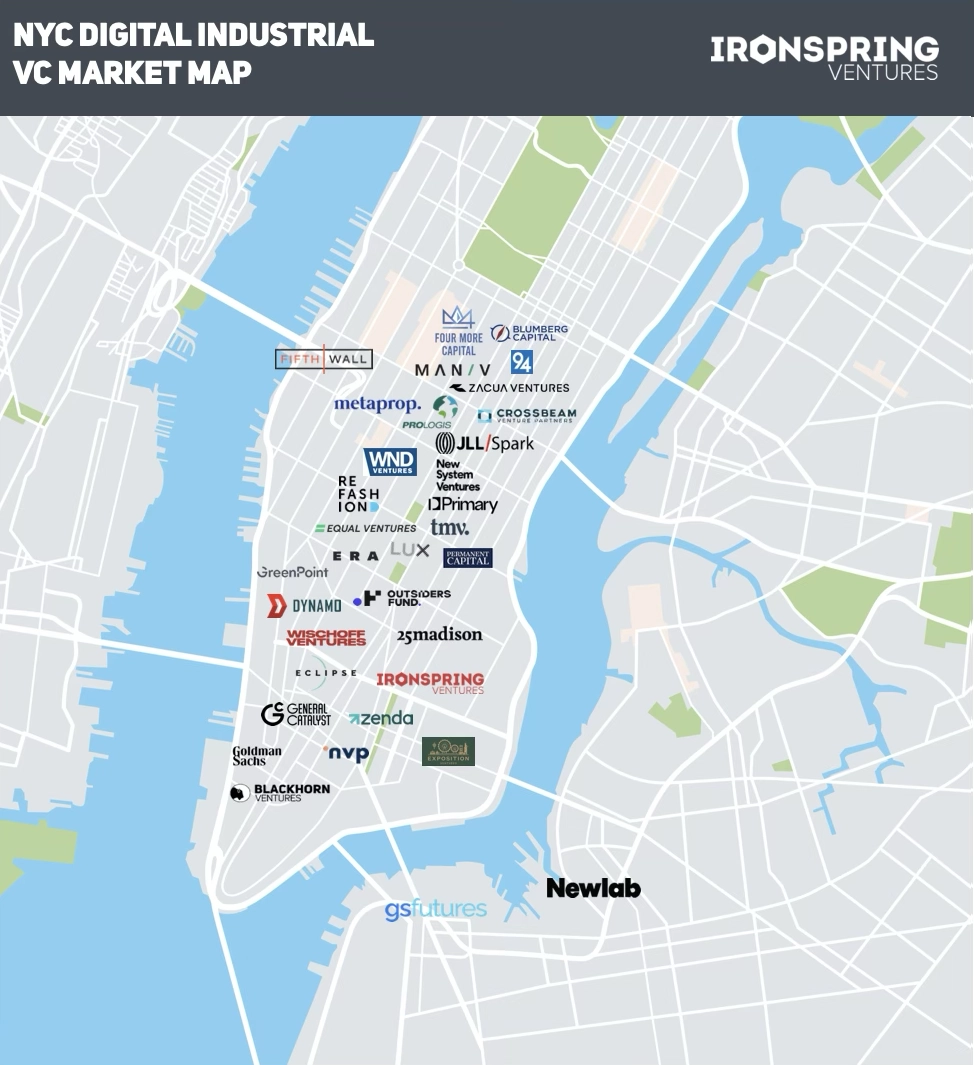
When I joined Ironspring Ventures five years ago, I was the only team member based in NYC. Today, given the high caliber (and growing) pool of industrial tech founders and dynamic industrial innovation ecosystem here, more than half of our investment team now works out of Manhattan.
And our engagement in the local community runs deep. In 2024, our team hosted the first-ever Heavy Hitters: The Digital Industrial Summit, a world class event inspired by the network effects of Heavy Hitters: The Digital Industrial Podcast, to discuss key issues of the day in digital industrial innovation and build ecosystem around these critical industries. We could have hosted this gathering of 100+ people in any city in the country, but the choice to bring it to New York was obvious given the abundance of major ecosystem players here and the tremendous enthusiasm from those outside of the region to travel to New York to take part in the industrial tech movement and momentum.
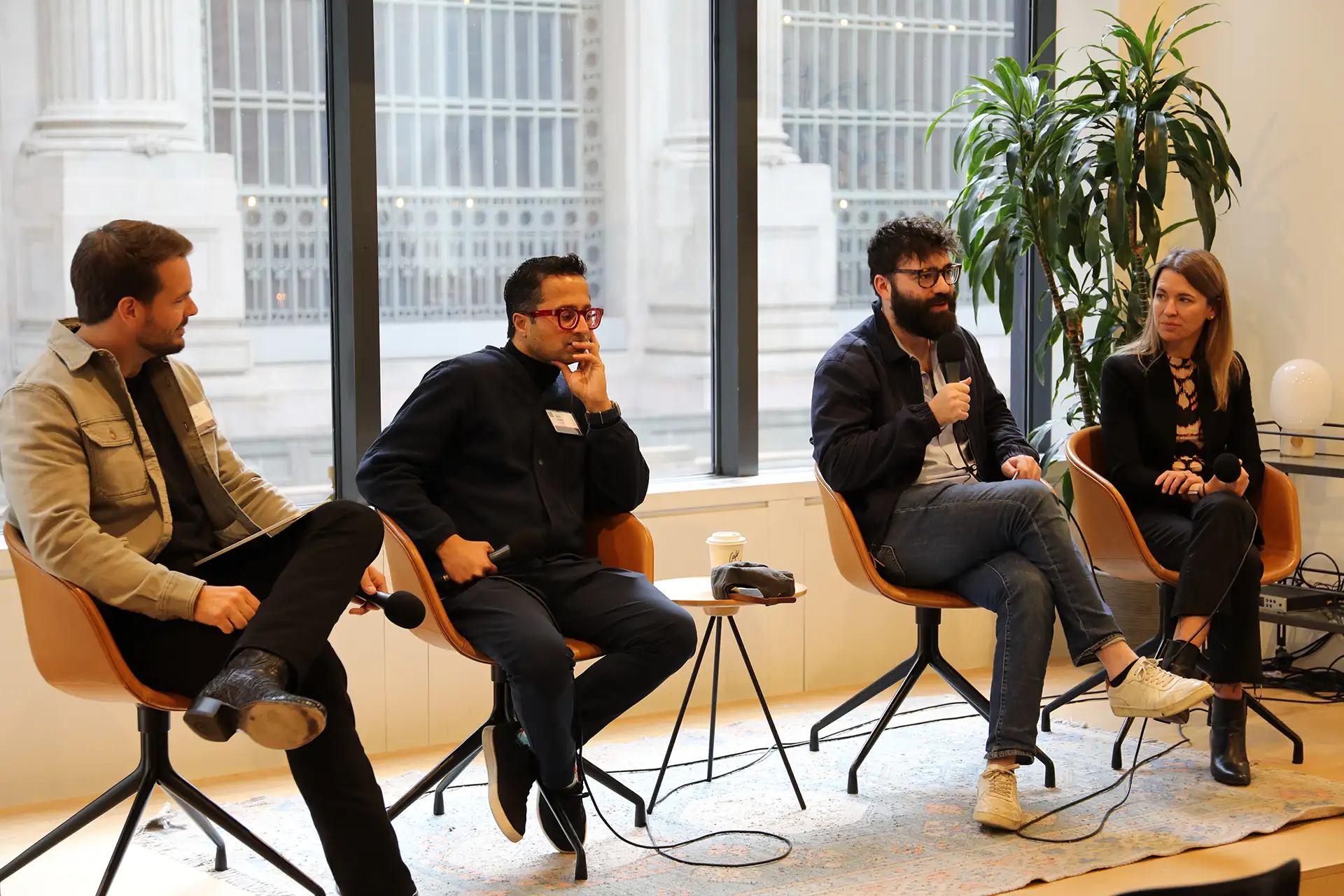
This week, we’re hosting our first ever event during NY Tech Week to spotlight digital industrial innovation during one of the tech ecosystem’s premier networking opportunities and contribute to fostering connections for this community. And these are just a few examples of how we’ve worked to convene important industrial innovation leaders in the city and support the pathbreaking founders building in our focus sectors (manufacturing, construction, transport & logistics, alternative energy) here. As always, Ironspring Ventures’ X-factor is our incredibly unique, sector-focused network, and we look forward to growing this network even further in NYC with our bolstered team on the ground here.
Ironspring Ventures has never been more bullish on the future of digital industrial innovation in NYC, and we’re fired up to do our part to catalyze even more breakout founders, technologies, and communities here. If you are building in industrial tech in NYC, let’s chat!
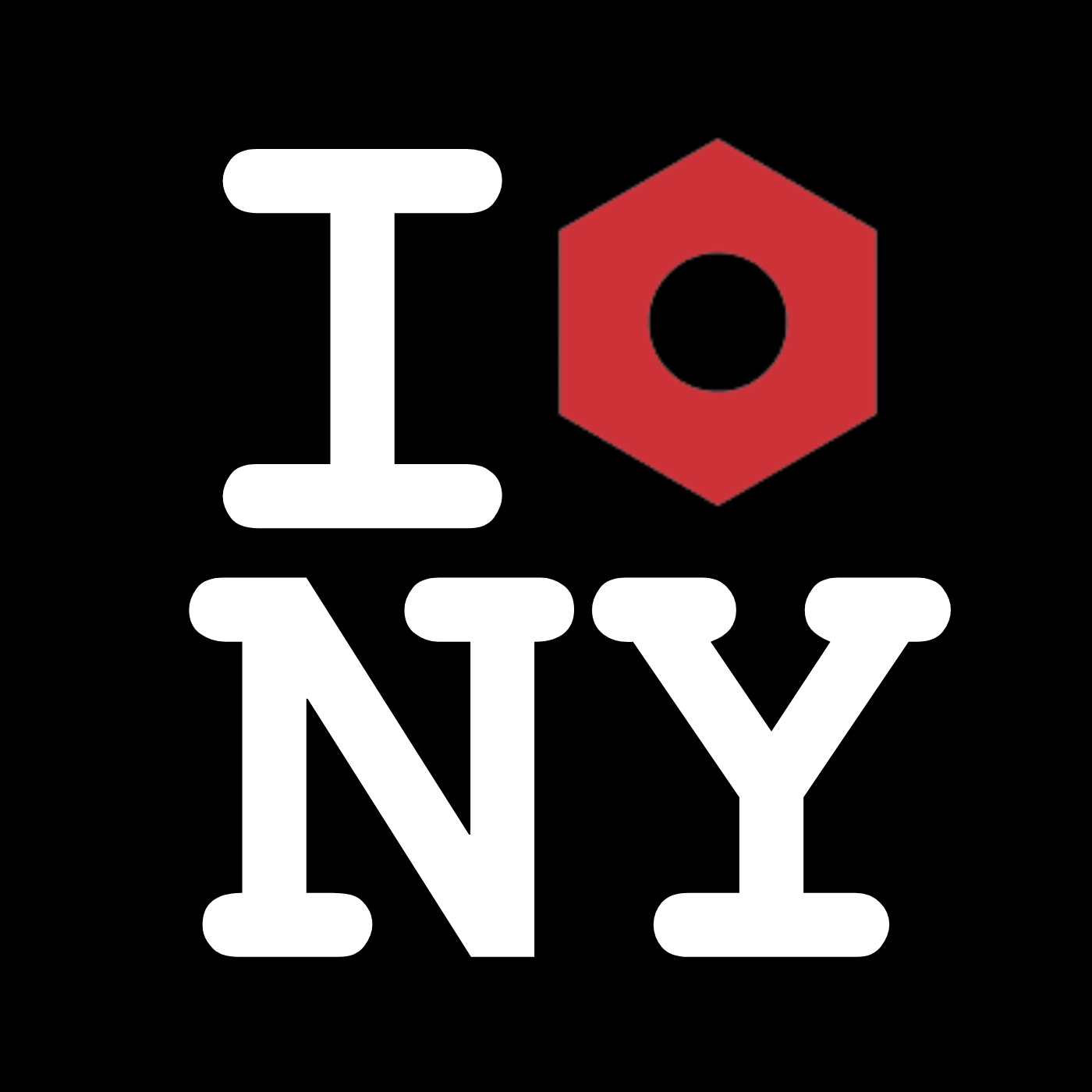
A sincere thank you to Adam Gluck – Copia, Kaitlyn Glancy – Eclipse, and Brandon Corts – Newlab for contributing to this piece. Thanks as well to Ironspring Ventures Investor Max Adelman for his significant work on this project.